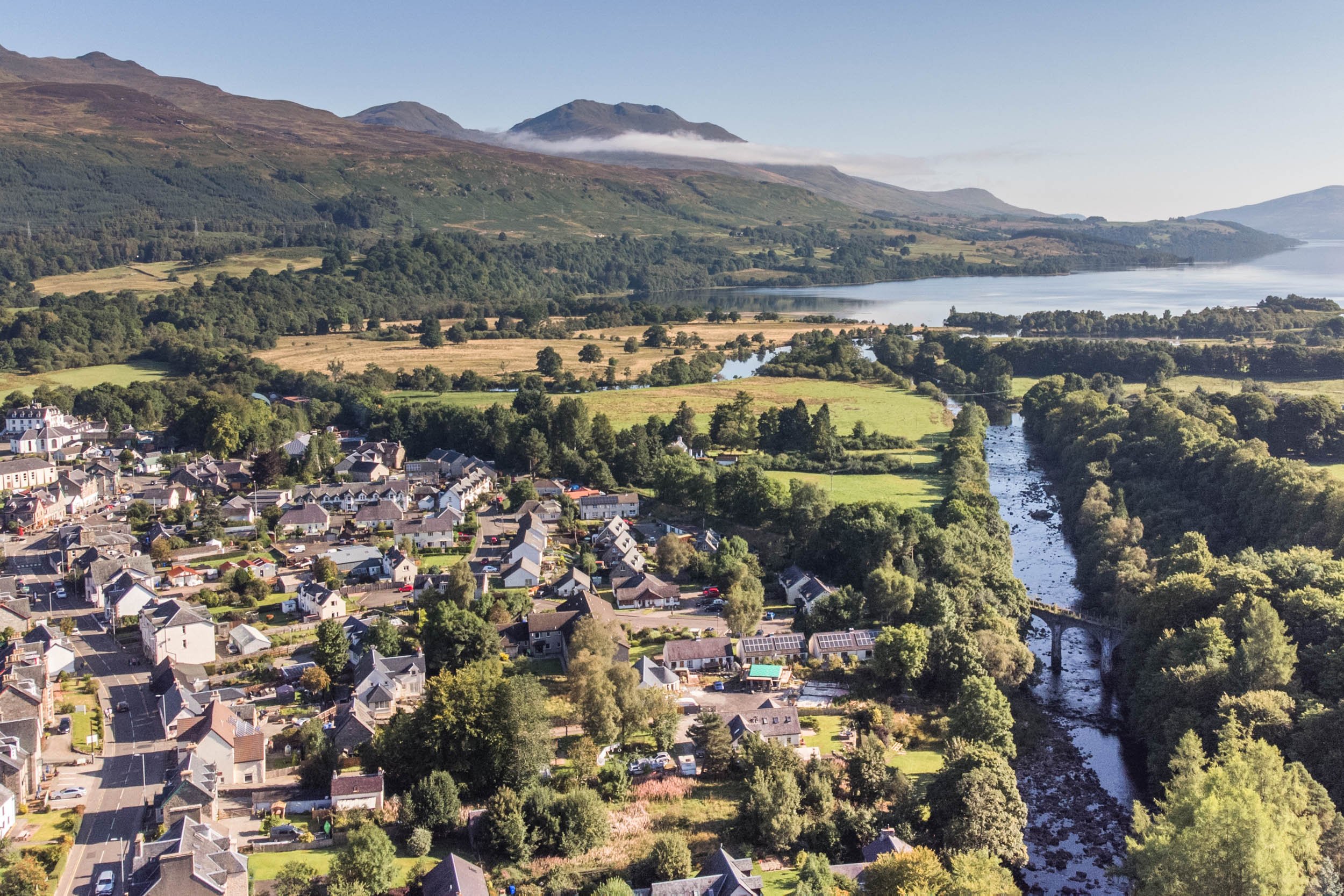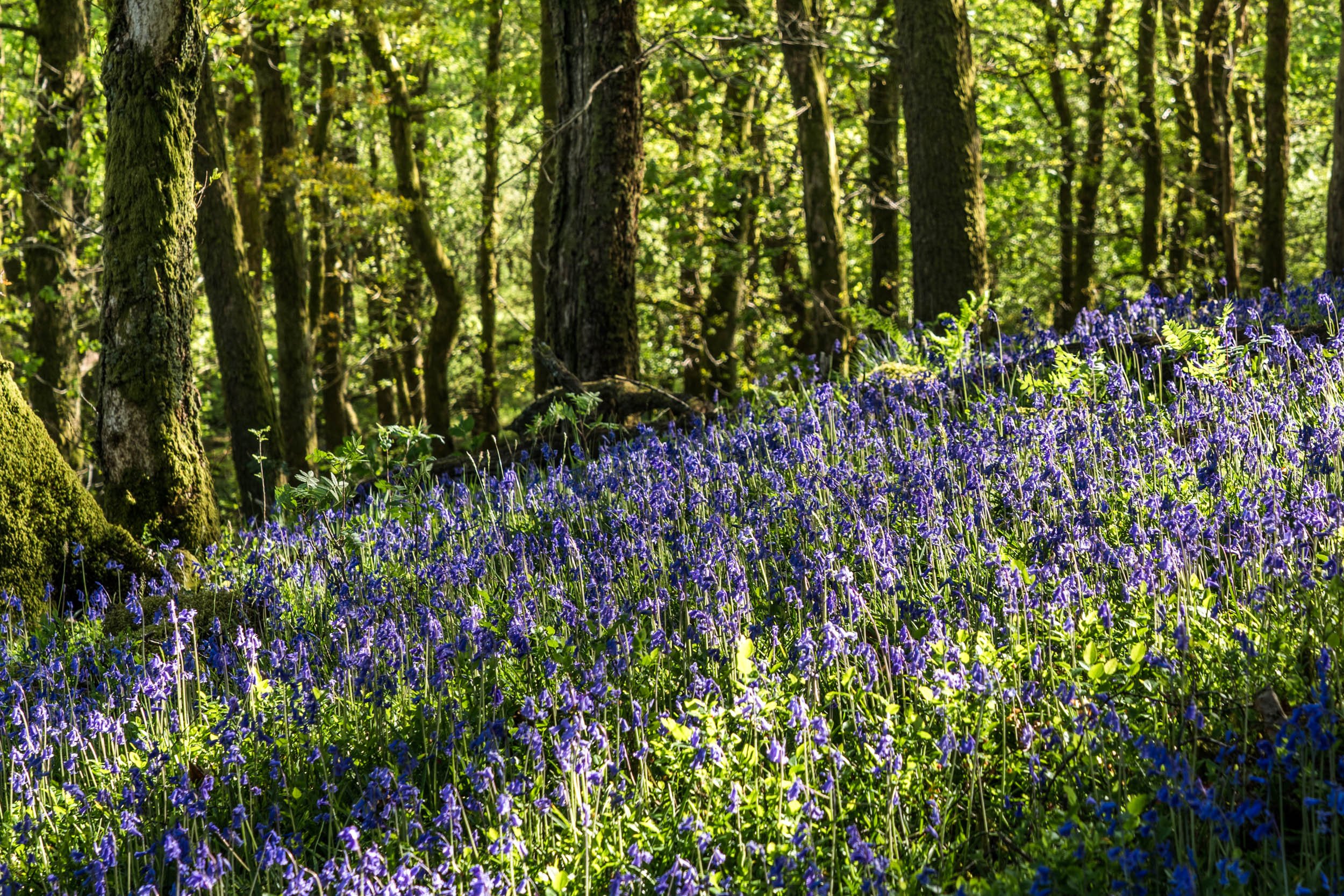
Fact File
(Picture: Killin)
Facts and Figures of the National Park
Loch Lomond and The Trossachs National Park covers an area of 720 sq miles (1,865 sq km) with a 220miles (350km) long boundary. Following the formation of the Scottish Parliament, and many decades of campaigning by the Friends of Loch Lomond and the Trossachs, and others, legislation led to the creation of Scotland’s first National Park on 19 July 2002. With over 7 million visitor days and 4 million visitors annually Loch Lomond and The Trossachs is Scotland’s most popular countryside destination. Such popularity brings its own associated visitor management challenges: one of the main reasons a National Park was established.
Munros & Corbetts
The National Park has 21 Munros (mountains over 3000ft / 914m) and 19 Corbetts (between 2,500ft and 3,000ft / 762m and 914m).
Forest Parks
Within its boundaries are both the Argyll Forest Park which was established in 1935 as Britain’s first Forest Park for public recreation, and the Queen Elizabeth Forest Park that stretches from the east shores of Loch Lomond and includes much of the Trossachs and Loch Lubnaig and Strathyre Forest to the north of Callander.
The current population within the National Park is 15,600 while its largest settlement is Callander with an estimated population of 3,160. The Park is characterised by small villages and townships and the main industries are tourism, forestry and farming, with a significant amount of commuting for work outwith the boundaries by some residents who live in its southern half.
The Ice Age
Loch Lomond is only 27ft / 8m above sea level and became a freshwater loch at the end of the last Ice Age (about 10,000 years ago). In ancient times it had been a sea-loch like Loch Long today.
Loch Lomond in Numbers
How deep is Loch Lomond? Loch Lomond is 623 ft / 190m deep at its deepest point in the north and contains an estimated 92,805 million cubic feet (2628 cubic m.) of water. It also has the largest surface area of any Scottish loch. Loch Lomond is 5 miles (8km) across, at its widest point to the south of the Highland Boundary Fault that runs through the loch. In its northern section it narrows considerably, to less than a mile across (c. 1.2km). The loch is 24 miles (39km) long.
Fish Species
With 15 native species, Loch Lomond has more native and introduced fish species than any other loch in Scotland. These include the powan, found in the UK in just a few lochs and tarns.
Loch Lomond Dock
Loch Lomond has its own unique plant. Growing nowhere else in Britain, the Loch Lomond dock (Rumex aquaticus) grows up to two metres tall – yet was only discovered in 1935.
Loch Lomond Islands
Inchmurrin Island on Loch Lomond is the largest island in an inland lake or loch anywhere in the UK. It is thought that by 1816 the illegal stills on the islands of Loch Lomond were producing an estimated 100 gallons a day for consumption in Glasgow.
Queen Victoria
Queen Victoria was one of many famous visitors to Loch Lomond and The Trossachs. The royal yacht had come to Arrochar on Loch Long as early as 1847, when Prince Albert went over to Tarbet and had a short cruise. In 1869, Victoria herself went for a loch cruise on a steamer called ‘The Prince Consort’.’ The Queen’s View’, a panoramic viewpoint of the loch from the A809 to the south, is also named after Victoria. (TheDuke’s Pass above Aberfoyle is named after the Duke of Montrose.
Mass Trespass
Long before the ‘right to roam’ legislation was enacted in the Loch Lomond area, outdoor enthusiasts from Dumbarton in May 1911 gathered for a mass trespass on the Overtoun estate, then a strictly guarded sporting estate. Demonstrations also took place at Balloch, where walkers wanted to reach the south shores of Loch Lomond. Today, both areas, naturally, are open to all and actively managed for recreation and walking.
The Loch Lomond Monster
In the 1953 US film ‘The Beast from 20,000 Fathoms’, about a giant dinosaur-like creature that attacks New York, the dialogue makes more than one reference to ‘The Loch Lomond Monster’ as evidence that weird creatures exist.
Though the song ‘The Bonnie Banks of Loch Lomond’ is most usually associated with Loch Lomond, the famous stretch of water is also referred to in ‘Brigadoon’. Alan Jay Lerner’s 1947 hit ‘Almost Like Being in Love’ includes the lines: ‘Maybe the sun gave me the pow’r / But I could swim Loch Lomond and be home in half an hour’!
Dr Finlay's Casebook and Callander
The novelist AJ Cronin was born in Cardross but accidentally put Callander on the ‘tourist map’ in the 1960s. He qualified as a doctor but became famous as a hugely successful novelist. In a novella called ‘Country Doctor’ readers discovered storylines, set in the 1920s, around a certain Dr. Finlay's general medical practice in a fictional Scottish town called Tannochbrae. Callander was the setting when these stories were first dramatized for television as ‘Dr Finlay’s Casebook’ – and the result was a long-lasting visitor boom!
Beltane Fire Ceremonies
Ben Ledi is the highest of the Trossachs hills and is associated with ancient Beltane rites – fire ceremonies formerly practiced by the locals from olden times, the days of the Celts. Though their summer started on May 1 a folk memory (perhaps) continues. The hill is a popular evening walk on midsummer eve, and walkers reach the 879m summit to see the sun go down at its most northerly point.
Harry Lauder and Glenbranter
The Scottish celebrity music hall star Harry Lauder bought an estate near Glenbranter in 1916, intending it for his son. A month after the sale was completed his son was killed in France on war service. Lauder accepted an offer from the then new Forestry Commission in 1921 to buy the estate, which is now part of the Argyll Forest Park. (Lauder’s autobiography says ‘We would never have left the Glen had John lived’.)
National Nature Reserves
The National Park itself takes in two National Nature Reserves (NNRs). Ben Lui, a high mountain in Breadalbane, as well as three other high peaks nearby, are noted for their alpine plants. Rocks that are less acid than those that make up some of the neighbouring peaks are the reason for the richness of the flora. At the south end of Loch Lomond, the Loch Lomond National Nature Reserve includes Inchcailloch and the mouth of the River Endrick and features over-wintering geese and other wildfowl, as well as summer visitors such as warblers.
The Royal Society for the Protection of Birds operates two nature reserves within the Park boundary. The Inversnaid reserve has fine oakwoods by Loch Lomond, with a variaret of summer visiting species, notably warblers and flycatchers, as well as black grouse on the moors above. Their (new in 2012) Wards Estate reserve actually falls within the Loch Lomond National Nature Reserve near the mouth of the River Endrick.
Lix Toll and the Romans
The little community at the junction of the Killin road with main A86 to the west is called Lix Toll and many guidebooks repeat the fanciful explanation that it is the Roman numerals for 59, recalling the 59th Legion. Sometimes it is said to stand for L9 – a tantalising reference to the famous 9th legion that may or may not have vanished in Scotland. Others prefer the explanation that the word is related to ‘laxa’ of Scandinavian origin and meaning salmon, or ‘leac’, Gaelic for a slab or gravestone.



